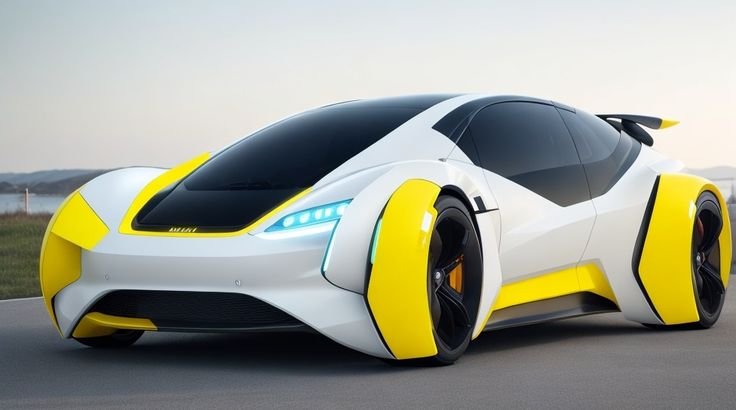
In the first quarter of 2025, U.S. automotive giants General Motors (GM) and Ford Motor Company recorded impressive growth in electric vehicle (EV) sales. This performance demonstrated the strength of their EV strategies and their ability to compete in a rapidly evolving market. Despite looming tariff challenges, both companies posted solid numbers, positioning themselves as serious contenders in the electrification race.
General Motors: EV Strategy Gains Traction
General Motors saw a 17% year-over-year increase in total U.S. vehicle sales during Q1 2025. The company delivered 693,363 vehicles in the U.S. alone. EVs contributed significantly to this growth. GM recorded a 94% increase in electric vehicle sales, totaling 31,887 units during the quarter.
Chevrolet led the charge with strong performances from its EV lineup. The Equinox EV sold 10,329 units, while the Blazer EV moved 6,187 units. These figures showed growing consumer interest in Chevrolet’s electric offerings. The GMC Hummer EV also experienced an impressive 109% rise in sales, reaching 3,479 units in Q1.
Rory Harvey, GM’s Executive Vice President and President of Global Markets, credited the company’s broad EV portfolio for its success. He emphasized that GM now leads the industry in truck and small SUV sales while also expanding its luxury brand, Cadillac. The combination of affordable EVs and premium electric models helped GM appeal to a wide range of customers.
Ford Motor Company: Steady Progress in Electrification
Ford sold 501,291 vehicles in the U.S. during Q1 2025, marking a 1.3% year-over-year decrease. However, the company’s EV and hybrid segments showed strong momentum. Ford’s electrified vehicle sales climbed 25.5% to reach 73,623 units.
The Mustang Mach-E stood out with a 21% sales increase. The model sold 11,607 units, setting a new record for Q1 performance. The compact Maverick pickup also delivered impressive results, reaching an all-time monthly sales high of 19,008 units in March. Ford’s hybrid vehicle sales rose 33% in the quarter, totaling 51,073 units.
The F-Series pickup trucks continued to deliver strong results, posting a 24% sales increase with 190,389 units sold. These figures underscored Ford’s strength in traditional segments while also revealing the growing appeal of its electrified lineup.
Consumers Rush to Buy Ahead of Tariffs
The Trump administration’s announcement of a 25% tariff on imported vehicles and automotive parts triggered a sense of urgency among consumers. Buyers rushed to purchase vehicles ahead of the April 3 deadline to avoid expected price increases. This consumer behavior provided a short-term boost to Q1 sales figures for major automakers.
However, these tariffs could significantly affect manufacturers like GM. The company produces both the Equinox EV and Blazer EV in Mexico, which means the new tariffs will apply to those models. Increased import costs could lead to price hikes, reducing the competitiveness of these vehicles in the U.S. market.
Ford could also face challenges depending on its supply chain dependencies and cross-border manufacturing. Analysts believe that if automakers pass tariff costs to consumers, they may weaken demand and limit sales growth in future quarters.
Tesla Faces Pressure as Legacy Automakers Gain Ground
While GM and Ford posted encouraging results, Tesla reported a 13% decline in first-quarter deliveries. The EV leader delivered 336,681 vehicles during Q1, marking its worst quarterly performance in three years. Analysts pointed to growing competition from legacy automakers and lingering production challenges as reasons for the slump.
This decline highlighted a critical shift in the EV landscape. Traditional automakers no longer play catch-up. Instead, they now offer compelling alternatives to Tesla’s lineup. GM and Ford have made strategic investments in EV technology, infrastructure, and manufacturing, allowing them to roll out high-volume electric models at competitive prices.
Tesla’s slowing growth could signal a period of market correction, especially as new players gain consumer trust and offer more affordable options. The strong Q1 performance from Ford and GM shows that traditional automakers have built serious momentum.
Tariff Headwinds Could Reshape Future Strategy
The impact of the 25% tariff on imported vehicles and parts will likely reshape manufacturing and pricing strategies for all automakers. GM and Ford may need to shift more production to U.S. facilities to avoid tariff-related costs. These moves would require capital investment and long-term planning, but they could also strengthen domestic job creation and supply chain resilience.
Automakers must now decide whether to absorb the additional costs, adjust pricing strategies, or streamline operations to maintain profitability. Building new plants, relocating production, or sourcing alternative suppliers could take time, but the potential benefits may outweigh the short-term disruptions.
Analysts expect the tariff situation to remain fluid, especially with the 2025 presidential election on the horizon. Automakers must stay agile, adapt to political changes, and maintain strong product pipelines to remain competitive in this environment.
EV Market Outlook Remains Strong
Despite the potential disruption from tariffs, the long-term outlook for electric vehicles in the U.S. remains positive. Consumers have shown strong interest in new EV models across multiple price segments. Automakers like GM and Ford have begun to offer electric vehicles that cater to budget-conscious buyers as well as premium customers seeking innovation and performance.
Federal and state incentives, growing charging infrastructure, and rising fuel costs have also helped create favorable conditions for EV adoption. As battery technology improves and prices continue to fall, EVs will likely become the default choice for many buyers.
Automakers that deliver reliability, value, and variety in their electric lineups will gain the upper hand. Ford’s success with the Maverick and hybrid models demonstrates the potential of versatile offerings. GM’s ability to launch multiple EVs across different brands proves that consumer appetite exists for electric mobility.
Conclusion
General Motors and Ford delivered strong Q1 EV results that reflected strategic growth and improved consumer confidence. Their efforts in electrification began to pay off with record sales, diversified offerings, and market share gains.
However, new challenges lie ahead. The 25% tariffs on imported vehicles and parts threaten to disrupt pricing, production, and profitability. Automakers must respond with bold adjustments, including localizing production and refining supply chains.
Despite the uncertainty, GM and Ford stand well-positioned to lead the next chapter of the EV revolution. With innovative models, strong brand recognition, and a growing presence in electric mobility, they continue to close the gap on Tesla and redefine the future of the automotive industry.





